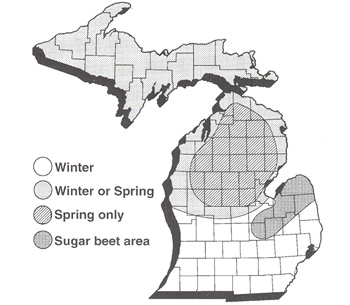
Varieties of Canola
Canola was developed from rapeseed, a plant used in India as many as three thousand years ago. Rapeseed has two compounds that, when present at high levels, make it less desirable for food uses. These are erucic acid, which is toxic to humans at high levels but is nontoxic at low levels; and glucosinolate, which is toxic to non-ruminants at high levels. Through traditional breeding, Canadian plant breeders produced rape with low levels of erucic acid (less than five percent) and low levels of glucosinolate (less than 30 μmol/gram). With low levels of these two compounds, this rape is called “double zero” because of the double zero risk of the seed for food purposes. The oil then became known as Canadian Oil, Low Acid rape or “Canola.” There are now many canola varieties, including varieties created through traditional breeding and others created through genetic engineering (genetically modified organisms, or GMOs). There are now varieties with traits such as greater tolerance to disease and herbicide tolerance. In 2001, 55% of the canola planted was GMO canola.
Winter vs. Spring Canola
Like many small grains, canola comes in two types, winter and spring canola. Based on experiences in Michigan and Ontario, the areas that are suitable for winter barley are also suitable for winter canola – in fact, winter canola generally yields 30 to 35 percent higher than spring-seeded canola. The mild, relatively cool summers also allow spring canola production in the more northern areas (Figure 1). A comparison of spring and winter canola types is presented below.
| Characteristics | Spring |
Winter |
| Maturity |
100-110 days (August-September harvest) |
10+ months (July harvest) |
| Height |
30-45 inches |
40-60 inches |
| Cold tolerance |
Tolerates a light freeze |
Overwinters |
| Seed yield (lbs/ac) |
1,500 - 2,500 |
2,000 - 3,000 |
| Seeds/lb |
125,000 - 150,000 |
100,000 - 125,000 |
| Adapted to |
Northern Michigan and U.P. |
Southern Michigan and U.P. |

Many varieties of spring canola and fewer winter varieties are available. There are some good general guidelines about variety selection on the Saskatchewan “Agricultural, Feed and Rural Revitalization” Canola Production Site . You may also contact your Michigan State University county Agricultural Extension office for more information about appropriate varieties for your region; or try the Great Lakes Canola Association .
Table. Charactersitics of the two types of canola




